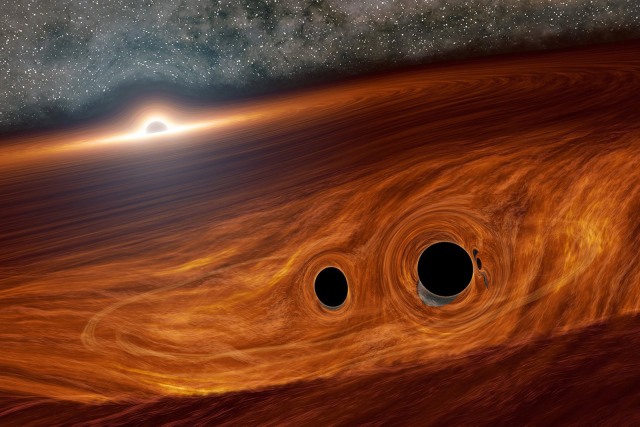Black hole collisions tend not to produce light by their very nature — you may catch gravitational waves, but that’s about it. However, scientists might have just found one of those rare instances where a collision was visible. A team using May 2019 data from both the Laser Interferometer Gravitational-wave Observatory (LIGO) and Europe’s Virgo detector has spotted what appears to be the first known instance of a “flare of light” from two merging black holes. If so, the key would likely be their interaction with a third, larger counterpart.
Many galaxies have supermassive black holes at their center whose giant gas disk can merge smaller black holes. When that happens, the newly unified black hole can be sent off in an unusual direction through the disk, sparking a gas reaction days or weeks after the gravitational waves appear. The timing of the flare lined up with this, and it even gradually faded away over the course of a month.
Researchers effectively eliminated other phenomenons as possible causes, such a black hole ‘eating’ a star, a supernova or a flare from the supermassive black hole itself.
This isn’t absolute proof, at least not yet. Caltech astronomy professor Matthew Graham was quick to warn that astronomers couldn’t “completely rule out” other events. If this is the result of a collision, though, it validates existing theories and represents a rare direct glimpse of black hole activity.
"light" - Google News
June 28, 2020 at 08:59PM
https://ift.tt/3dBj80Z
Astronomers may have spotted light from colliding black holes - Engadget
"light" - Google News
https://ift.tt/2Wm8QLw
https://ift.tt/2Stbv5k
Bagikan Berita Ini















0 Response to "Astronomers may have spotted light from colliding black holes - Engadget"
Post a Comment